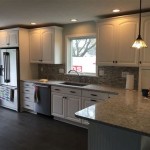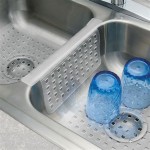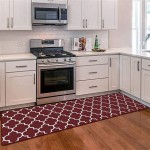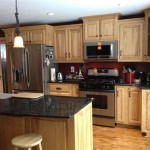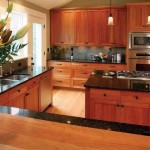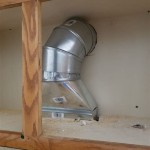A kitchen butcher block is an essential piece of equipment for any home cook or professional chef. It’s a great way to prep and store food, as well as adding a beautiful and classic touch to any kitchen. But what is a butcher block and how does it differ from other kitchen tools?
What is a Butcher Block?
A butcher block is a large cutting board made of wood. It’s usually constructed from planks of hardwood, such as maple, oak, or walnut, and is designed to be durable and easy to clean. Butcher blocks are typically rectangular in shape, with a flat top and sides, and they can range in size from a few inches wide to several feet. The most popular size is 18 inches wide by 24 inches long.
Butcher blocks have been around for centuries, and they are commonly used in both commercial and home kitchens. They are ideal for prepping food, as the hardwood surface is gentle on knives, and it’s easy to clean and maintain.
Advantages of a Butcher Block
There are several advantages to using a butcher block in your kitchen. First, it’s easy to clean and maintain, as you can simply wipe it down with a damp cloth and mild soap. Second, the hardwood surface is gentle on knives, which means your blades will stay sharper longer. Finally, butcher blocks are aesthetically pleasing and can add a classic touch to any kitchen.
Disadvantages of a Butcher Block
The main disadvantage of using a butcher block is that it can be hard to keep clean and sanitary. If it isn’t properly maintained, bacteria can build up and contaminate food. To prevent this, it’s important to clean and sanitize a butcher block regularly.
Types of Butcher Blocks
Butcher blocks come in a variety of styles and sizes, and there are several materials to choose from. The most common materials for butcher blocks are hardwood, such as maple, oak, or walnut; plastic; and wood composite. Each material has its own advantages and disadvantages, so it’s important to consider which one is right for you.
- Hardwood: Hardwood butcher blocks are the most popular choice, as they are durable, easy to clean, and aesthetically pleasing. However, they can be expensive and require regular maintenance.
- Plastic: Plastic butcher blocks are lightweight, affordable, and easy to clean. However, they are not as durable as hardwood, and can be easily scratched or dented.
- Wood Composite: Wood composite butcher blocks are a combination of hardwood and plastic. They are more durable than plastic, and more affordable than hardwood. However, they are not as aesthetically pleasing as hardwood.
Conclusion
A kitchen butcher block is an essential piece of equipment for any home cook or professional chef. It’s great for prepping and storing food, and can add a classic touch to your kitchen. There are several types of butcher blocks to choose from, and it’s important to consider which one is right for you. With proper maintenance, a butcher block can last for years, and it can be an invaluable tool in any kitchen.















Related Posts


